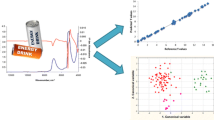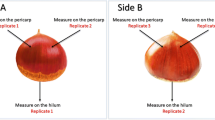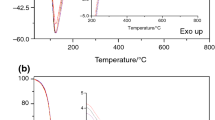Abstract
Cachaça, like other distilled beverages, often passes through an aging process and a peculiar fact is that Brazilian native woods are used for producing the barrels used for aging, in addition to oak. Cachaças can be aged in barrels of amendoim (Pterogyne nitens), balsam (Myroxylon peruiferum), jequitibá (Cariniana estrellensis), umburana (Amburana cearensis), and oak (Quercus sp.). Cachaças aged in wooden barrels have their final price for the consumer substantially increased, making them susceptible to fraud. So, methods to check the authenticity of aged cachaça are increasingly required. In this paper, 109 samples of commercial aged cachaças were used for the construction of supervised classification models—PLS-DA (partial least squares for discriminant analysis) and NPLS-DA (N-way PLS-DA)—by using UV-Vis spectrophotometry and spectrofluorimetry. The best results were obtained for the model based on low-level data fusion, providing good reliability rates for the training and test sets (ranging from 56 to 100 %) for all the analyzed classes.





Similar content being viewed by others
References
Alamprese C, Casale M, Sinelli N, Lanteri S, Casiraghi E (2013) Detection of minced beef adulteration with turkey meat by UV–vis, NIR and MIR spectroscopy. LWT-Food Sci Technol 53:225–232
Aquino FWB, Rodrigues S, Nascimento RF, Casimiro ARS (2006) Simultaneous determination of aging markers in sugar cane spirits. Food Chem 98:569–574
Bahram M, Bro R, Stedmon C, Afkhami A (2006) Handling of Rayleigh and Raman scatter for PARAFAC modeling of fluorescence data using interpolation. J Chemom 20:99–105
Barker M, Rayens W (2003) Partial least squares for discrimination. J Chemom 17:166–173
Biancolillo A, Bucci R, Magrì AL, Magrì AD, Marini F (2014) Data-fusion for multiplatform characterization of an Italian craft beer aimed at its authentication. Anal Chim Acta 820:23–31
Botelho BG, Reis N, Oliveira LS, Sena MM (2015) Development and analytical validation of a screening method for simultaneous detection of five adulterants in raw milk using mid-infrared spectroscopy and PLS-DA. Food Chem 181:31–37
Bro R (1996) Multiway calibration multilinear PLS. J Chemom 10:47–61
Casale M, Casolino C, Oliveri P, Forina M (2010) The potential of coupling information using three analytical techniques for identifying the geographical origin of Liguria extra virgin olive oil. Food Chem 118:163–170
Casale M, Oliveri P, Casolino C, Sinelli N, Zunin P, Armanino C, Forina M, Lanteri S (2012) Characterisation of PDO olive oil Chianti Classico by non-selective (UV–visible, NIR and MIR spectroscopy) and selective (fatty acid composition) analytical techniques. Anal Chim Acta 712:56–63
Di Anibal CV, Callao MP, Ruisánchez I (2011) 1H NMR and UV-visible data fusion for determining Sudan dyes in culinary spices. Talanta 84:829–833
Faria JB, Cardello H, Boscolo M, Isique WD, Odello L, Franco DW (2003) Evaluation of Brazilian woods as an alternative to oak for cachacas aging. Eur Food Res Technol 218:83–87
Favilla S, Durante C, Li Vigni M, Cocchi M (2013) Assessing feature relevance in NPLS models by VIP. Chemom Intell Lab 129:76–86
Godinho MS, Blanco MR, Gambarra Neto FF, Lião LM, Sena MM, Tauler R, Oliveira AE (2014) Evaluation of transformer insulating oil quality using NIR, fluorescence, and NMR spectroscopic data fusion. Talanta 129:143–149
Gondim CS, Junqueira RG, Souza SVC (2011) Trends in implementing the validation of qualitative methods of analysis. Rev Inst Adolfo Lutz 70:433–447
Gondim CS, Coelho OAM, Alvarenga RL, Junqueira RG, Souza SVC (2014) An appropriate and systematized procedure for validating qualitative methods: its application in the detection of sulfonamide residues in raw milk. Anal Chim Acta 830:11–22
Hall GJ, Clow KE, Kenny JE (2005) Estuarial fingerprinting through multidimensional fluorescence and multivariate analysis. Environ Sci Technol 39:7560–7567
Kennard RW, Stone LA (1969) Computer aided design of experiments. Technometrics 11:137–148
MAPA (2005) Secretaria de Defesa Agropecuária. Ministério da Agricultura, Pecuária e Abastecimento. Instrução Normativa No 13, Brazil
Pérez NF, Ferré J, Boqué R (2009) Calculation of the reliability of classification in discriminant partial least-squares binary classification. Chemom Intell Lab 95:122–128
Pizarro C, Rodríguez-Tecedor S, Pérez-del-Notario N, Esteban-Díez I, González-Sáiz J (2013) Classification of Spanish extra virgin olive oils by data fusion of visible spectroscopic fingerprints and chemical descriptors. Food Chem 138:915–922
Silva AA, Nascimento ESP, Cardoso DR, Franco DW (2009) Coumarins and phenolic fingerprints of oak and Brazilian woods extracted by sugarcane spirit. J Sep Sci 32:3681–3691
Silva AA, Keukeleire D, Cardoso DR, Franco DW (2012) Multivariate analyses of UV-Vis absorption spectral data from cachaca wood extracts: a model to classify aged Brazilian cachacas according to the wood species used. Anal Methods 4:642–646
Souza PP, Siebald HGL, Augusti DV, Neto WB, Amorim VM, Catharino RR, Eberlin MN, Augusti R (2007) Electrospray ionization mass spectrometry fingerprinting of Brazilian artisan cachaca aged in different wood casks. J Agric Food Chem 55:2094–2102
Trullols E, Ruisanchez I, Rius FX (2004) Validation of qualitative analytical methods. Trac-Trend Anal Chem 23:137–145
Vera L, Aceña L, Guasch J, Boqué R, Mestres M, Busto O (2011) Discrimination and sensory description of beers through data fusion. Talanta 87:136–142
Wise BM, Gallagher NB, Bro R, Shaver JM, Windig W, Koch RS (2006) Chemometrics tutorial for and solo. Eingenvector Research Inc, Wenatchee
Acknowledgments
The authors thank CAPES and CNPq for fellowships.
Conflict of Interest
Cristina D. Bernardes declares that she has no conflict of interest. Dr. Paulo J. S. Barbeira declares that he has no conflict of interest. This article does not contain any studies with human or animal subjects.
Author information
Authors and Affiliations
Corresponding author
Rights and permissions
About this article
Cite this article
Bernardes, C.D., Barbeira, P.J.S. Different Chemometric Methods for the Discrimination of Commercial Aged Cachaças. Food Anal. Methods 9, 1053–1059 (2016). https://doi.org/10.1007/s12161-015-0284-6
Received:
Accepted:
Published:
Issue Date:
DOI: https://doi.org/10.1007/s12161-015-0284-6




